Hello everyone! I hope that my blog post finds you well. My name is Ashlee Petranovich and I am currently in Murray, Kentucky attending Murray State University. While I am here on my internship I will be collaborating with four different programs that are focused on mental health, school safety, school psychology, and psychological assessments. These programs are indirectly or directly associated with the College of Education and Human Services at Murray State. The work that I will be completing in the next 7 weeks aligns with the following bullet points:
- Grant implementation experience through the MSU/WKEC Mental Health Providers Academy grant
- Counseling and assessment experience shadowing school psychology interns as they complete screening for and diagnosis of autism spectrum disorder in youth clients
- Assisting faculty with literature reviews on manuscripts and grants
- Website enhancements for KY School Safety
- Assisting the Center for Student Engagement and Success
- Sharing my perspective and knowledge
*Due to confidentiality and working with human subjects I am limited in what exactly it is that I can write about/post pictures of*
MONDAY, JULY 10TH
I started my day bright and early and took care of Saylor before I headed into observation. It was nice waking up early and having a slow morning where I could devote more time to being away from the hustle of the day. Saylor and I went on a lengthy walk this morning and we watched as the sun rose! Glad I have her to give me company while my aunt and uncle are in Mexico having the time of their lives. After this, I headed over to the clinic. There was unfortunately a no-show today but I stayed to look over a new CBT treatment program that is designed for children from the ages of 7-13 who have anxiety. This program is called “Coping Cat” and is truly the most interesting thing ever. I went through the therapist manual and the child’s workbook. This program and its contents was created by Philip C. Kendall, Ph.D. ABPP and Kristen A. Hedtke M.A. The goal of the coping cat, as laid out in the handbook, is to “teach children to recognize signs of unwanted anxious arousal and to let these signs serve as cues for the use of anxiety management strategies.” The version of the Coping Cat that the clinic has, has 16 sessions within it that are completed in a 16 week span. Each week has a specific topic, however, the first eight sessions are the training segments while the last eight are practice segments that focus on exposure tasks.
Below are the session topics:
Children’s View:
- Introduction
- Recognizing Feelings
- How Does my Body React?
- Parent Meeting
- Let’s Relax
- What am I Thinking?
- What Should I do?
- How am I Doing?
- Parent Meeting
- Start Practicing
- More Practice
- More Practice
- It’s Getting Tougher
- Let’s Practice Some More
- Another Chance to Practice
- You Did It!
Therapist’s View
- Communicating and getting acquainted with treatment goals
- Identify the feelings of anxiety, help the child to recognize different emotions, and distinguish between the feelings of anxiety and worry
- Identifying somatic responses to anxiety
- The first meeting with the parents
- Familiarity with relaxation training and its use in reducing muscle tension associated with anxiety
- Identify anxious self-talk and learn to challenge thoughts
- An overview of anxiety self-talk and coping self-talk and developing problem-solving skills
- Self-assessment and self-reward training and a review of skills learned
- Second meeting with the parents
- Practice in situations with low anxiety using exposure assignments
- Practice in situations where you are anxious, using exposure assignments
- Practice coping tasks in situations with moderate anxiety
- Teaching coping tasks in situations with moderate anxiety
- Teaching coping tasks in situations with high anxiety
- Teaching coping tasks in situations with extensive anxiety
- Practice coping tasks in situations of high anxiety, debriefing, and finish treatment
I really did enjoy looking through the topics of every session and seeing how exactly the therapist and child accomplish the goals laid out by the program. Later on in the day I got to observe the first two sessions of coping cat and see how the therapist would engage with the child and work with them.
After this, I headed back home and spent the day with Saylor and finished up writing all of the cards I was going to give out to others.
TUESDAY, JULY 11TH
Class was in session today and it was all about Autism Spectrum Disorder- the exact disorder I have been working with for the past two months. Today’s class was truly interesting as I was able to dive deeper into Autism and how one can categorize and recognize it. The first slide was an opener to a study that Kiln in 2000 did called the Social Attribution Task. Kiln had multiple participants for this study and were split into two groups: one being the typically developing adolescent boy and the second being a adolescent boy with ASD. These children were both shown the same video (https://www.youtube.com/watch?v=EZyNJiV9KCQ)and were asked to describe what happened in the video after viewing. The typically developing child had said, “…what happened was that the larger triangle – which was like a bigger kid or a bully, and he had isolated himself from everything else until two new kids come along and the little one was a bit more shy, scared, and the smaller triangle more like stood up for himself and protected the little one. The big triangle got jealous of them, cam out, and started to pick on the smaller triangle. The little triangle got upset and said like ‘what’s up? Why are you doing this?’…” while the other child with ASD had said, “The big triangle went into the rectangle. There were a small triangle and a circle. The big triangle went out. The shapes bounce off each other. The small circle went inside the rectangle. The big triangle was in the box with the circle. The small triangle and the circle went around each other a few times. They were kid of oscillating around each other, maybe because of a magnetic field. After that they go off the screen. The big triangle turned into a star – like a Star of David – and broke the rectangle…”
These two answers vary greatly. One child is able to correctly fulfill social attribution, which is a cognitive process that involves the ability to understand and interpret the thoughts, feelings, intentions, and behaviors of other people. It is a fundamental aspect of social cognition and is crucial for successful social interactions and allows people to skillfully navigate through social interactions. The child attributed a feeling towards the triangles and circle. He coined the smaller circle as shy, isolated, and scared. He directly attributes emotion to this scenario. While the other child, who has ASD, refrains from doing so and puts a literal description, image for image of what happened. Nothing is wrong with this description but it lacks the emotion that the other child was able to articulate. In the context of Autism Spectrum Disorder, individuals often will experience challenges in social communication and interaction. As I touched on earlier, this could mean understanding social cues, emotions, and intentions of others. As you will see below in the photos, we also learned about another study done by Klin in 2002 which was Defining and Quantifying th Social Phenotype in ASD. This utilized eye-tracking technology to study the social experiences of young children. The study showed black/white movies and tracked eye movement in novel social situations. Here, you can examine someone searching for social meaning in real-life situations and what are they using to understand what is happening. A viewer with autism may not be able to initiate joint attention, which refers to the ability to share focus or attention on something with someone else. For example, if you point to a rainbow in the sky, and someone else looks at it with you and can follow your attention and come back to you, that is successfully engaging in joint attention. A lot of interactions between humans follow this format. You can see that in these photos, a viewer with autism does not follow the conversation and focuses on other aspects of the conversation which can be deemed as irrelevant and non-important. Their gaze does not focus on the eyes of others and dazes away to the chin, mouth, neck. To me, this study allowed me to have more empathy toward those who do have autism and experience social challenges such as having a conversation. It is not that they don’t want to be engaged, sometimes, it is simply something that they cannot focus on.
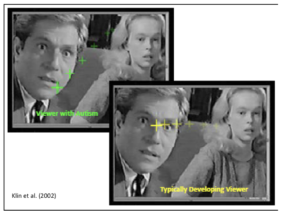
Notice the start of view and where the eyes ended up leading toward. Is the child focusing on obscure objects that are irrelevant in the situation or are they following eye contact?
We further went on to discuss what Autism is.
Autism is…
- Difficulty with social relationships
- Difficulty with verbal communication
- Difficulty with non-verbal communication
- Difficulty in the development of play and imagination
- Resistance to change in routine
It is all about people
ASD is characterized by:
- Persistent deficits in social communication and social interactions across multiple contexts, including all of the following:
-
- social-emotional reciprocity
- nonverbal communication
- Developing/maintaining/understanding relationships
2. Restricted, repetitive patterns of behavior, interests, or activities
-
- Stereotypy (motor, vocal, object use)
- Inflexibility (Insistence on sameness)
- Highly restricted, fixated interests that are abnormal intensity or focus
- Hyper/hypoactivity to sensory input, unusual interests in sensory activities (pain, tolerance, abnormal sensory responses to sight/touch/taste/smell
*Symptoms MUST be present during early developmental period, to some degree*
We went into a brief history about autism but then focused on the core features of autism. You’ll see below, all of the milestones for development. I found these to be the most interesting because I have seen the diagnostic process with all of the testing that goes into ASD. There are numerous subtests that address all of these milestones and require the examiner to test them. It was great to be able to cross reference what I have seen and learned!
Developmental Milestones
0-3 months > Sensitivity to and preference for faces/speech sounds
3-6 months > Emergence of dyadic social interactions
6-9 months > Development of face processing skills
> Response to name
> Anticipatory social games
9-12 months > Social monitoring and imitation
> Social referencing
> Joint attention
We then learned about the biological basis of Autism which was so interesting to learn as well. Then, we spoke about the key characteristics that make ASD unique which would be:
- Imitation
- Joint attention *
- Affective sharing
- Symbolic play and social games *
- Lack of eye contact or maintaining
- Little interest in other children *
- Does not point to indicate interest *
- Inappropriate play with toys *
Red flags during the first 18 months= *
We went into the specifics of each one of these characteristics and discussed what makes them atypical.
Then we discussed some of the misconceptions of Autism and also ASD in females and how it is overlooked and how they are late to be diagnosed. Then, we went over all of the tests that go into evaluating Autism and also the evidence based treatments for Autism. This involved behaviorally-based treatments, visual supports, social skills treatments, CBT (cognitive behavioral therapy), and pharmacological.
Class today was amazing and I learned so much! After class, I headed home to be with Saylor and enjoy the rest of my day.
WEDNESDAY, JULY 12TH
Today I had observation, but before I headed in, I got the entire school psych group donuts and brought them my cards I had made for them, thanking them for letting me be a part of their clinic. I was so happy because one of the graduate students, who I hadn’t seen in a while was there at the clinic and it was so nice to say goodbye to them one last time. Every single one of the graduate students were such great people and I am definitely going to miss seeing their bright faces every day! We started our day off right, for sure.
Once it turned 9:00, we got a showing of a client and we were able to do an evaluation on them. I sat in behind the police officer screen, which allows me to see in but doesn’t allow for them to see me, and observe the testing there. What was completed was a WPPSI and an ADOS Mod 2 test. This went by fairly quick and it ended up being a short day. I ended my time with the school psych group today and I said goodbye. Forever grateful for the amazing, talented, and bright people I met here. Despite there being a 10-15 age gap between me and those I observed, I was able to get to know everyone really well and bond with them. I made sure they knew that they made an everlasting impact on my life! Going to miss them for sure!
After this, I cleaned out my office and packed up all of the fun merch I received while being here. I am going to miss my office and how peaceful it was to be in there.
THURSDAY, JULY 13TH – FRIDAY, JULY 14TH
Today and Friday was spent cleaning up my aunt and uncle’s house and getting all of my stuff put together so that I am ready to pack everything up tomorrow. Along with this, I went out with a friend to a local bookstore and coffee shop. I got two new books (adding to my obsession) and I am so excited to start reading them! It was nice to be with my friend today and see her one last time before I left to go home.
SATURDAY, JULY 15TH
Peggy and Dave came home today! I was so happy to see them again since this past week was without them! I know Saylor was also so happy to see them. They came late at night but either way, I got to see them. I decorated their room with a bunch of sticky notes and a card for them. Peggy has decorated my mirror every single day, so I wanted to make sure she felt the love too!
SUNDAY, JULY 16TH
Today was my final day in KY and my aunt and I decided to spend the night in Nashville so that we could leave not as early as we would have to if we stayed in KY for the night. We spent the day downtown in Nashville and I felt the liveliness of Nashville and every single building had a different artist with different music. It was incredibly loud but it was so fun! I saw some of my favorite country artists on wall art and got to see some of their merch in stores. It was so fun! I loved going down and just exploring with my aunt! After this, we went to dinner where I had the best Caesar salad in my entire life and had nice talks with Peggy. I think my most favorite part of this experience has been getting to know my aunt more and just being able to spend so much more time in her presence. She is truly such a sweetheart with a big heart. I am so grateful that I have gotten to spend more time with her since I haven’t seen her in awhile. She is my bff for real!
After this, Peggy and I went to the hotel and played crazy eight by the pool. We talked more about our favorite memories during this experience. Then, we headed up to the hotel and watch Napoleon Dynamite.
MONDAY, JULY 17TH
Toady is the day I headed home and got to see my family again! My dad picked me up from the airport and we went together to go to a local restaurant. We watched a rerun of the broncos game that got us into the Superbowl 50. It felt like I was home immediately! What an amazing time it has been in Kentucky. It has been an experience of a lifetime. This experience was truly a transformative one. I have been able to discover opportunities for personal and professional growth within the field of psychology since I spent every moment learning, engaging, and stepping outside of my comfort zone. Before this internship I felt nervous, like, extremely nervous that I was not going to be qualified enough, or that I couldn’t keep up with all of the new steps I was going to have to take during my time here. That feeling, I can now conclude, was completely irrational and so far away from reality. I was able to do it. I was able to step into a new environment and blossom in a sense! I made new friends, I tried new things, I put myself out there, I was always advocating for my ability to learn. I may not have came into this internship knowing everything there was to know about psychology and simply having a baseline sense of what psych is, but I was eager to learn. That is what ultimately what kept me moving throughout all of these experiences.
To Sarah Holbrooke and the Pinhead team, THANK YOU!!! I couldn’t have been a part of this experience without you all helping me every step of the way. You all made yourselves readily available for me if I ever needed help. This opportunity would not have been possible if it weren’t for you all. You have given me an experience that I will always cherish. This program is amazing and I will always support it! Thank you.
To Peggy and Dave, THANK YOU!!! You two are wonderful and I am so grateful that you welcomed me into your home with open arms. You both supported me greatly through this experience and made sure that I never forgot that. You both are so special to me and I can’t express how thankful I am for everything you did for me. I made such happy memories with you guys and I can’t wait to do it again real soon! Thank you. Give hugs to Say for me!
To all of the mentors I had along the way, THANK YOU!!! I was working numerous different programs and the mentors that I had during each of them supported me so much with everything I did. I couldn’t have had the amazing experience I had without you all. This experience has built me up in so many ways and that is because of you all, so thank you.
To my dad, mom, and sister, THANK YOU!!! Being away from home; from you all, was not easy! But I am so grateful that you guys pushed me to do this internship and never ceased to encourage me to keep being hungry for knowledge. You all are my rock and foundation in everything I do and I am so grateful that I have you all to depend on. Thank you for wanting great things for me. I am so happy to be home and tell you all about what I learned. Thank you.
To you, reader, thank you for reading along my internship journeys and taking the time to read and learn with me. I hope that it was enjoyable for you! Thank you.
I hope you had an amazing week. Thank you for joining me on my journey! It was a great last week at Murray State University in KY!

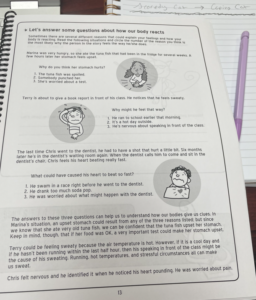
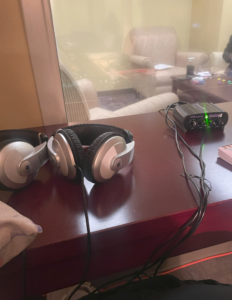
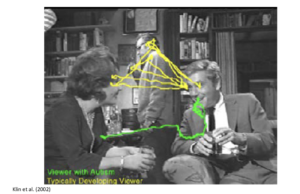
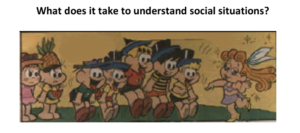
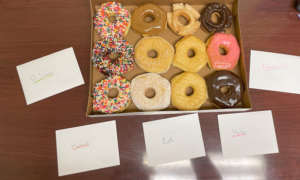
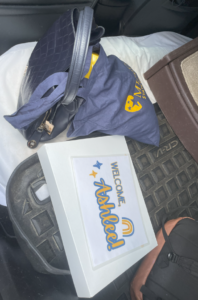
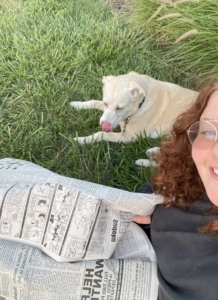
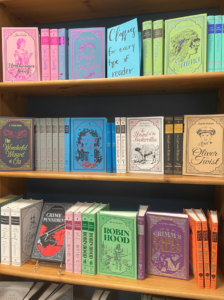
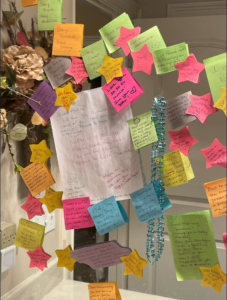
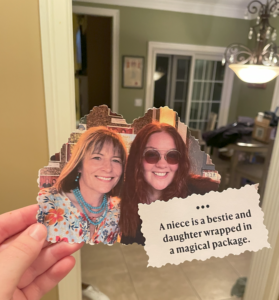
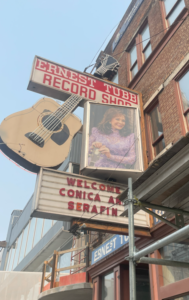
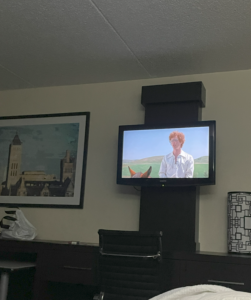
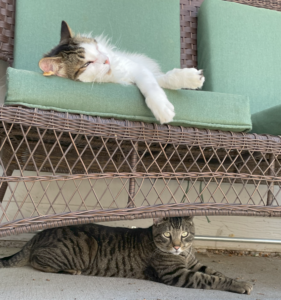
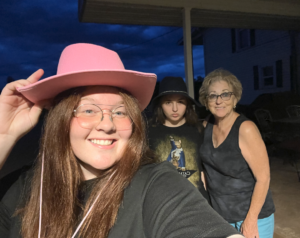
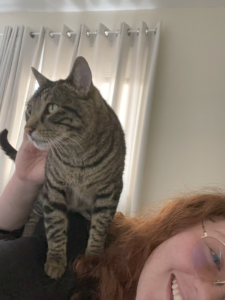
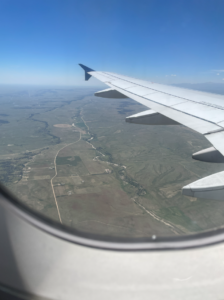
Ashlee,
We are so blessed to call you our daughter. You are so beautiful, gifted and talented and there is no limit to what you can achieve. It’s amazing how much you accomplished and all the work you did while you were away. We are and always have been so very proud of you. We love you. ❤️
YESS I AM SO PROUD OF YOU. You did so well and I can just feel your passion for this Ash. I love you so so much and you did an awesome job!
I have so much love for you Karinna! You have been so supportive of me and I enjoyed calling you every week! I’m so excited to see where you go next. Your future is so bright!